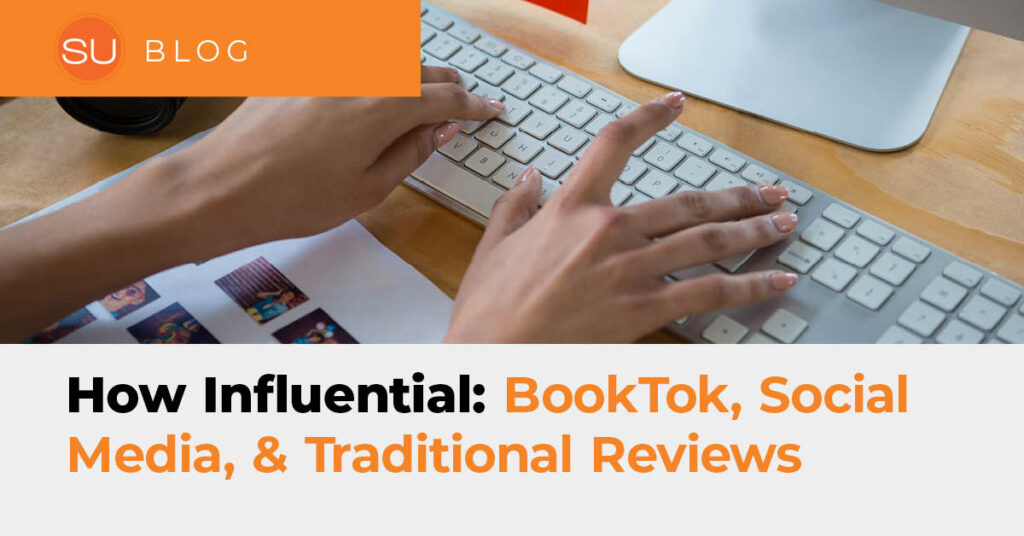By Sarah Kloth

If you’ve ever found yourself adding a book to your cart because someone on Instagram or TikTok raved about it with tears in their eyes, you’re not alone. Welcome to the era of social media book communities, where passionate readers wield an influence once reserved for literary critics and newspaper reviewers. But as platforms like BookTok, Bookstagram, and Twitter propel books to the top of bestseller lists, it begs the question: who really decides what’s worth reading—social media or traditional book reviews?
The Rise of Social Media Book Communities
BookTok, Bookstagram, and even book-focused Twitter threads have reshaped how books gain popularity. Here, books aren’t just reviewed; they’re felt. Readers post about how a novel wrecked them emotionally, left them breathless, or changed their perspective. It’s raw, it’s personal, and it spreads like wildfire.
Consider The Song of Achilles by Madeline Miller or Fourth Wing by Rebecca Yarros—both saw massive success years after publication, largely because of impassioned social media readers. These books weren’t necessarily championed by traditional reviewers at the time of release, but platforms like TikTok and Instagram gave them a second life. Why? Because social media thrives on emotion, relatability, and the power of personal recommendation.
Social media book discussions also feel like a community. When you see someone with similar tastes raving about a book, it’s easy to think, “If they loved it, I will too.” The visual appeal of social media—stacked bookshelves, aesthetic annotations, and dreamy reading nooks—also plays a role in attracting readers. It’s no longer just about the book itself but the entire experience surrounding it.
The BookTok Phenomenon
Among all social media platforms, BookTok has emerged as the most powerful force in shaping book sales and trends. With its short, engaging videos and emotionally charged reactions, TikTok has turned books into viral sensations overnight. Unlike traditional reviews that take a measured, analytical approach, BookTok thrives on authenticity and passion—whether it’s someone sobbing over a heart-wrenching ending or screaming about an unputdownable romance.
BookTok’s power extends beyond individual readers; publishers now actively monitor trending books on TikTok, sometimes reprinting older titles or even redesigning covers to cater to the platform’s audience. Many bookstores have dedicated “BookTok Made Me Buy It” sections because the impact is undeniable—if a book catches fire on TikTok, it can sell out within days.
What makes BookTok unique is its inclusivity. It has provided a platform for diverse authors, indie books, and genres often overlooked by traditional media. Readers who once struggled to find recommendations that resonated with them now have an entire community eager to share books that feel fresh, relevant, and deeply emotional.
The Role of Traditional Reviews
Meanwhile, professional book reviews—those found in The New York Times, Kirkus Reviews, and Publishers Weekly—offer a different kind of evaluation. These reviews analyze structure, prose, and themes with an eye for literary merit. A glowing review from The New York Times can elevate a book’s credibility, making it more likely to be stocked in bookstores and libraries. But do readers pay as much attention to these reviews as they used to?
Many traditional reviews remain influential, especially for literary fiction, non-fiction, and award-winning novels. However, they often feel detached compared to the personal, enthusiastic style of social media reviews. While a professional critic might break down the strengths and weaknesses of a novel’s pacing, a Bookstagrammer or BookToker is more likely to scream into the camera, saying, “This book shattered my soul, and you HAVE to read it.” That kind of energy is contagious.
There’s also the issue of accessibility. Traditional reviews are often behind paywalls, buried in long-form articles, or focused on books that cater to a niche audience. Social media, on the other hand, is free and immediate. A single viral post can introduce thousands of new readers to a book within minutes, something a traditional review rarely accomplishes.
The Changing Definition of Influence
So, who holds the power? Ten years ago, literary critics were the gatekeepers, determining what was considered “worthy” of attention. Today, influence is more democratized. Readers trust people they relate to, whether that’s a well-read BookToker, an aesthetically pleasing Bookstagrammer, or even a casual Twitter user posting a spontaneous book rant.
This shift has also changed the kinds of books that thrive. Romance, fantasy, and thrillers—genres often dismissed by traditional reviewers—have found an enormous audience thanks to social media. It’s a space where self-published authors and indie books can go viral overnight, completely bypassing traditional publishing’s approval system.
That’s not to say professional reviews are obsolete. They still serve as a benchmark for literary quality and provide insightful critiques that casual reviewers may not. However, their influence is being shared, and in many cases, overshadowed by the sheer enthusiasm of social media readers.
Who Really Holds the Power?
For today’s readers, the answer depends on what you’re looking for. If you want a deep, analytical breakdown of a book’s themes, traditional reviews still provide valuable insight. But if you’re looking for a book that will grip you, make you feel something, and be an unputdownable read—social media might be your best guide.
At the end of the day, the beauty of reading is that it’s personal. Whether you trust a seasoned critic or a Bookstagrammer who just discovered their new favorite novel, the choice is yours. But one thing is clear: social media is no passing trend—it’s shaping what we read, one viral recommendation at a time.
Continue Reading
Check out the the Spring 2025 Issue: Genres in Bloom.
